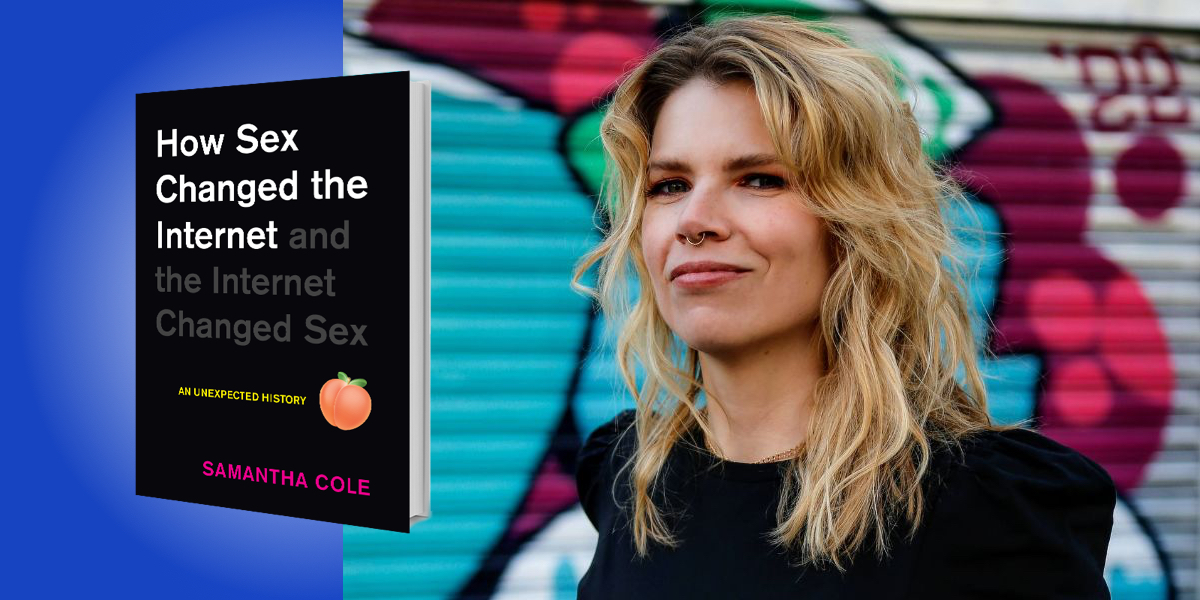Samantha Cole has been a journalist for over 10 years, spending the last five reporting on tech, sexuality, gender, and the adult industry. She is a senior editor of Motherboard, the science and technology outlet for VICE.
Below, Samantha shares 5 key insights from her new book, How Sex Changed the Internet and the Internet Changed Sex: An Unexpected History. Listen to the audio version—read by Samantha herself—in the Next Big Idea App.
1. The internet was built on sex.
Early modes of internet communication were predicated on, and popularized by, a desire for sex and romance. Bulletin Board Systems, the digital equivalent of public cork boards, were quickly popularized as places to access porn online. With names like SleazeNet, ThrobNet, and Pleasure Dome, many subscription-based bulletin boards were for trading images scanned from porn magazines or photos uploaded by amateurs.
But they weren’t all just for smut; they were also hubs of harm reduction, especially during the AIDs crisis and as a way for queer and marginalized people to find community and care in a time when coming out was even more dangerous than it is today.
On Usenet, a decentralized messaging system, people debated concepts of safe spaces and moderation. They fought over whether men should be permitted in women’s-only threads, and kept long-running threads about everything from politics to how have sex on a scuba dive.
In text-based multi-user domains, or MUDs people roleplayed as fantasy versions of themselves, and found love and loss. In one classic MUD legend, someone playing as an evil clown sexually assaulted other members of the chat, which threw the entire community into chaos.
“People fell deeply in love within these online spaces, met in person, got married, or got their hearts broken.”
In these systems, people grappled with how to define consent, abuse, and harassment. People fell deeply in love within these online spaces, met in person, got married, or got their hearts broken. Ex-lovers emailed administrators to ask to be removed from the chats, since seeing their former partners even through a screen was too emotionally charged. The desire to be seen and understood permeated these earliest predecessors of social media, and naturally, they often turned to the sexual.
2. The tech we take for granted was pioneered by sex.
Much of the technology used today was developed to build an internet devoted to sex and sex work. Browser cookies and user tracking were developed by online dating entrepreneurs and porn webmasters who wanted to keep track of who visited their sites so that they could advertise more effectively. Affiliate marketing, which makes a lot of the internet run today, was popularized by porn site owners who needed to make money from the thousands of people visiting their sites every day.
The JPEG was developed using a photo of a playboy centerfold named Lena, and her photograph was used as the test to standardize image processing for decades.
Webcams and web conferencing software were popularized by the earliest generations of cam models, who set up sites to sell a peek inside their bedrooms. Lifestreamers, who streamed their lives 24/7, no censorship, paved the way for today’s Twitch and Tiktok stars. Tech that was once used mostly for sexual intrigue we now use for business calls every day.
“Online sex tech pioneers are still crafting new ways to express themselves and capitalize on the internet’s insatiable desires.”
The founder of Web Personals, which was one of the very first online dating websites, claims to have invented the shopping cart and the tech that tracks users from page to page within a site.
Site subscriptions, members-only content, online credit card transactions, and advertising models—the list goes on, and online sex tech pioneers are still crafting new ways to express themselves and capitalize on the internet’s insatiable desires.
3. The internet transformed the porn industry.
The adult industry used to work very differently. Pre-internet, it was based on a studio system, where you typically had to have an agent, know a producer, or be located somewhere like LA or the San Fernando Valley. The production companies or the studios owned the rights to your images as well as all the video you shot with them.
This system also meant that buying porn required finding a store, browsing the shelves, and buying or renting a tape or magazine. These shops were very male-dominated spaces.
All of that changed with the internet and inventions like the webcam and user-generated content platforms like clip and cam sites. Suddenly anyone could break out and carve their own niche, retain ownership of their own content, vet clients through safer means, and work on their own terms, often without leaving home.
4. The internet transformed the sex toy industry.
The 70’s saw a revolution in women’s pleasure: people like Dell Williams, the founder of Eve’s Garden in New York City, and sex educator Joani Blank pioneered the notion of sex toys and orgasms as something healthy and worthwhile. Hitachi magic wands were sold at Macy’s and buying one is what inspired Dell Williams to open her own shop.
“More people than ever could safely browse, comparison shop, read reviews and chat about their interests, kinks, and fetishes.”
But when the World Wide Web came along in the late 80’s, the internet did for sex toys what it had done for porn: took an experience previously isolated to socially stigmatized spaces (like sex shops or adult video stores) and brought the shopping experience home. A wider variety of people could now access sex toys that were once out of their grasp. More people than ever could safely browse, comparison shop, read reviews and chat about their interests, kinks, and fetishes.
There has been a big destigmatizing effect as well. It’s a lot less awkward than it used to be to buy a sex toy, and it’s a lot less weird to talk to strangers about your kinks.
5. The future of sex online depends on us.
On the modern-day internet, sexual speech—including sex work, sex education, and expressions of sexuality outside of the heteronormative—are increasingly suppressed. Bad legislation like FOSTA (Fight Online Sex Trafficking Act) or SESTA (Stop Enabling Sex Traffickers Act), which passed into law in 2018 and conflated all sexual speech as trafficking, made it harder for anyone working in these industries or trying to build communities around sexual identity to exist online. Anti-sex groups are pushing for increased censorship and discrimination by mainstream platforms like Facebook, Instagram, and Twitter, under the guise of saving women and children from exploitation. Demonizing sex doesn’t solve abuse online—it makes it worse.
The pessimistic view is that things will continue to get more sterilized and censored online. The reality is that things aren’t getting more welcoming to sex, they’re getting more hostile.
If we want a future where sexuality, innovation, and safety co-exist, then we have to stand against discrimination of sex workers and marginalized people, and take control of how we want to exist online.
To listen to the audio version read by author Samantha Cole, download the Next Big Idea App today:































